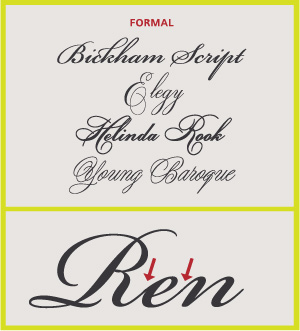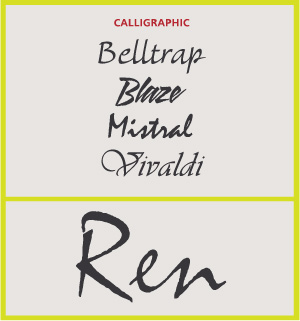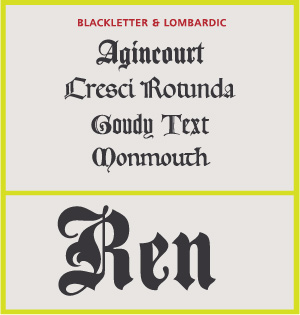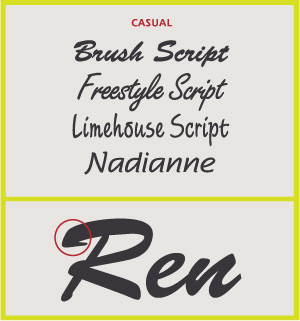Script Typefaces
Scripts are, of course, typefaces based on handwriting, particularly formal scripts. The letters often connect, but not necessarily so. They range from the very formal — Matthew Carter’s Snell Roundhand, named after the author of a 1694 booklet on penmanship, originally released in 1966 — to the very casual — Ashley Havinden’s eponymous Ashley Script, from 1955.
Formal
These typefaces are derived from 17th century formal writing styles. Many characters have strokes that join them to other letters.
Callgraphic
These scripts mimic calligraphic writing. They can be connecting or non-connecting in design. Many appear to have been written with a flat-tipped writing instrument.
Blackletter & Lombardic
These typefaces are patterned on manuscript lettering prior to the invention of movable type.
Casual
These typefaces are designed to suggest informality, as if they were written quickly. Many times they appear to have been drawn with a brush. Normally, character strokes connect one letter to the next.
Source
Alessio, Joseph. "Making Sense Of Type Classification (Part 2)." Smashing Magazine. N.p., 19 June 2013. Web. 27 Apr. 2014.
Haley, Allan. "Select Your Language." Type Classifications. N.p., n.d. Web. 27 Apr. 2014. http://www.fonts.com/content/learning/fontology/level-1/type-anatomy/type-classifications>.



